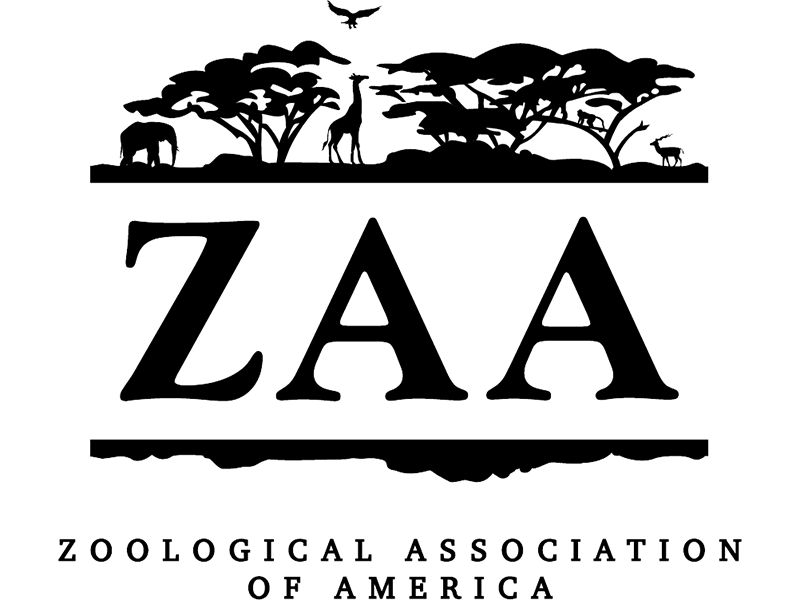The Animals
Cougar
General Info
Common Name: Cougar
Scientific Name: Puma concolor
Physical Appearance: Varies by geographic region. Pelage ranging from light brown, tawny, to reddish, with a lighter underside. Distinct dark patches of fur near their mouth and on the end of the tail. Ears round and erect and move to focus on sounds.
Length/Weight: Males average 7-9 feet and females average 5-7 feet, from nose to tail. Males range between 120-175+ lbs.; females 90-125+ lbs. Largest recorded male: 275 lbs.
Lifespan: 10-12 years in the wild, up to 20 years in captivity

Environment
Range: Cougars can be found from southern Canada down to Patagonia in southern South America. They live from sea level to 19,000 feet. Cougars occupy the largest geographical range of any cat.
Habitat: The cougar can be found in a broad range of habitats from all forest types, as well as lowland and montane deserts. Amazingly, they can be found in any area with adequate cover and prey. They are known to live in temperatures of -40 to 100+ degrees.
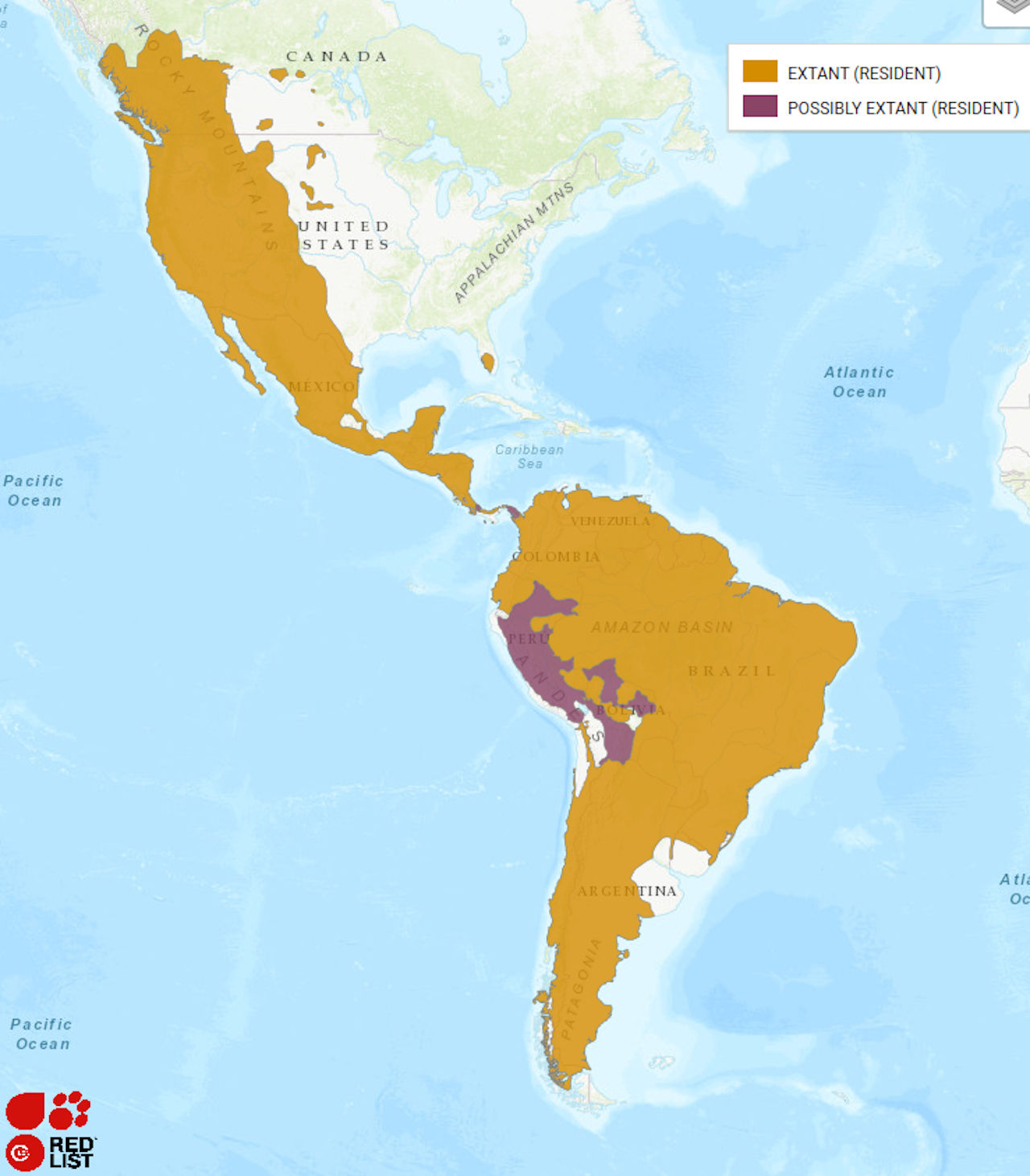
Diet
Cougars are obligate carnivores, preferring ungulates but will hunt smaller animals. As an ambush predator, cougars will stalk their prey from a distance of 40-50 feet, then rush and pounce using the force of their body to bring down the prey. They will consume what they can then “cache” the remainder of the prey for later consumption. Cache sites will be covered with nearby vegetation to preserve the remains.
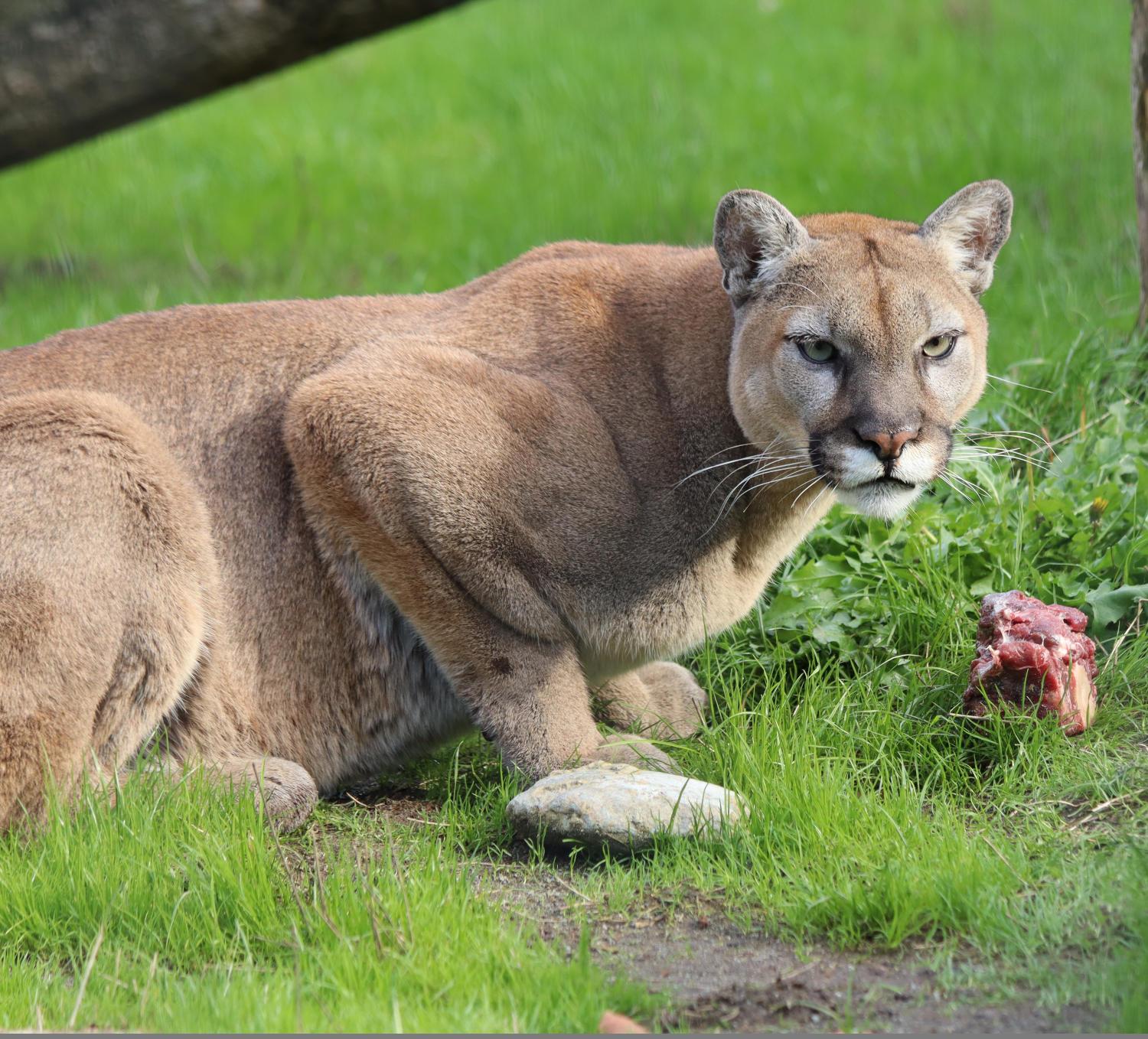
Reproduction
Males maintain territories that overlap with those of several females. Breeding is non-seasonal with most births occurring in the summer. Females usually have young every other year. One to four cubs are born after a gestation period of 91-95 days. Cubs are weaned at four to six months, accompany the mother in her home range for about two years, and then will disperse to a broader range in search of unoccupied territories.
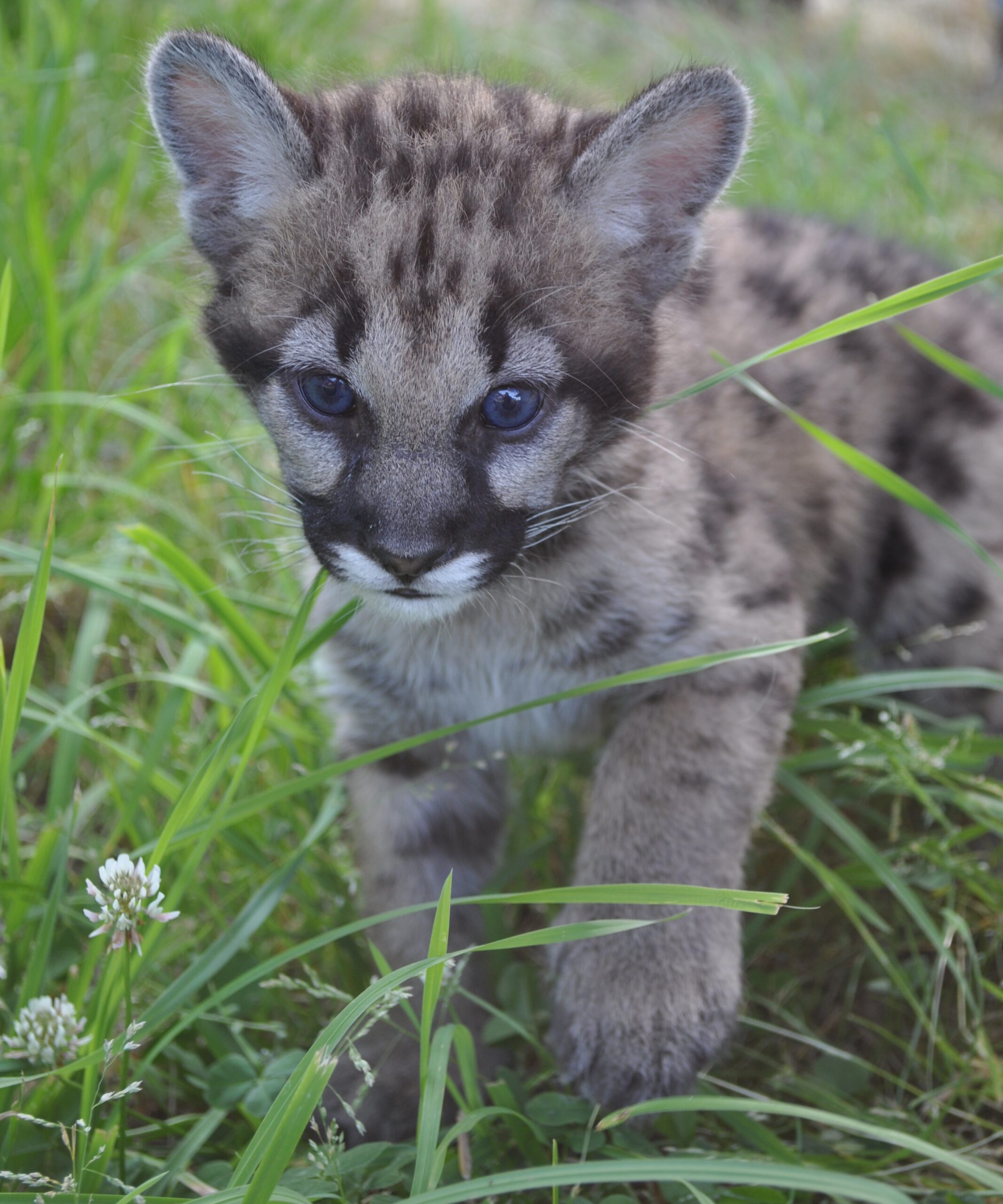
Conservation
Population Trend: DECREASING
*Florida Panther population is listed as “Endangered” via the U.S. Fish and Wildlife Service -Decline due in part to habitat loss, vehicle collisions, and intraspecific competition.
Efforts: Specific subspecies are protected across much of their range, with hunting prohibited or regulations in place. Current efforts are being designed to minimize human-carnivore conflict in areas where populations are currently stable.
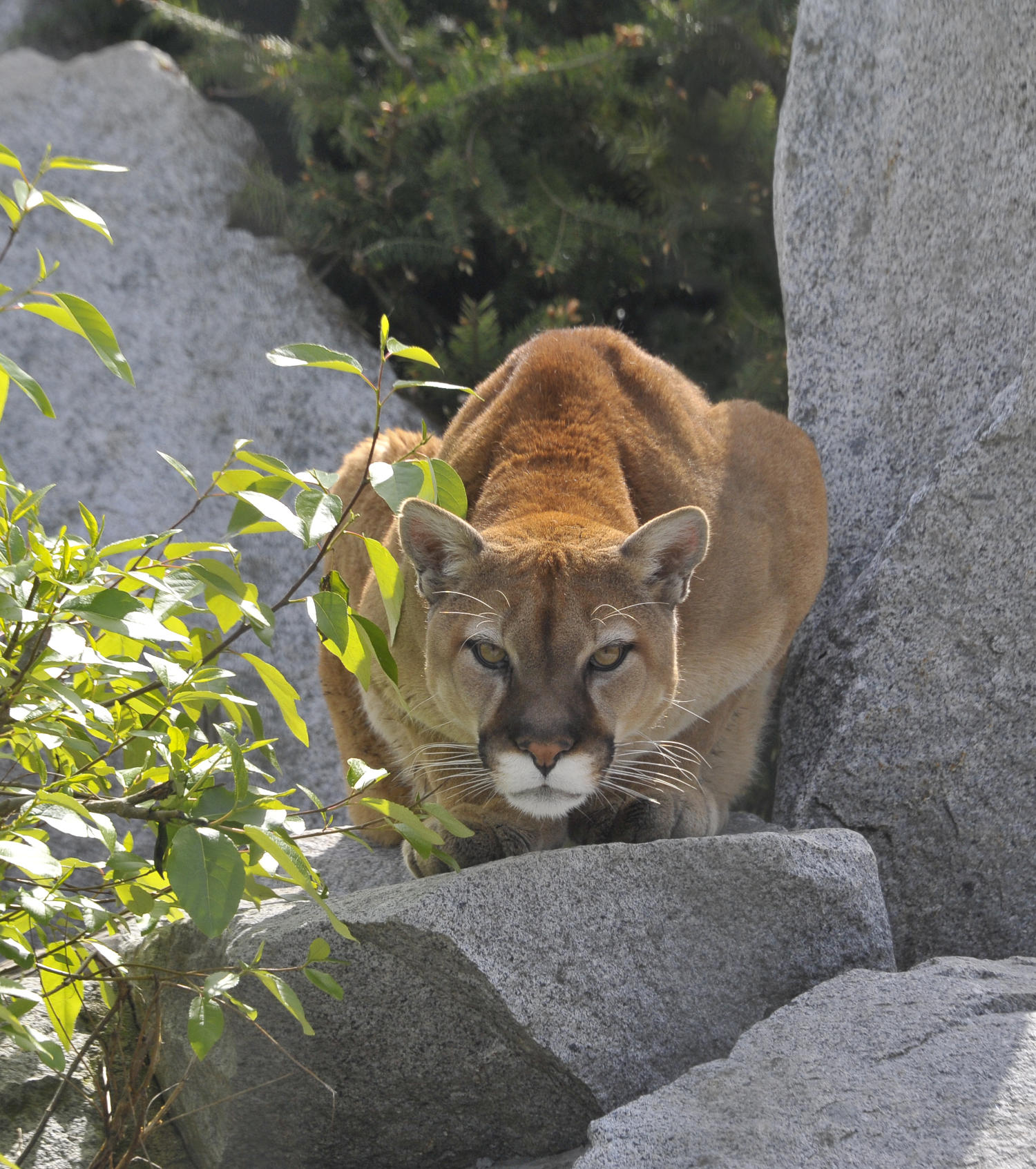
Important Facts
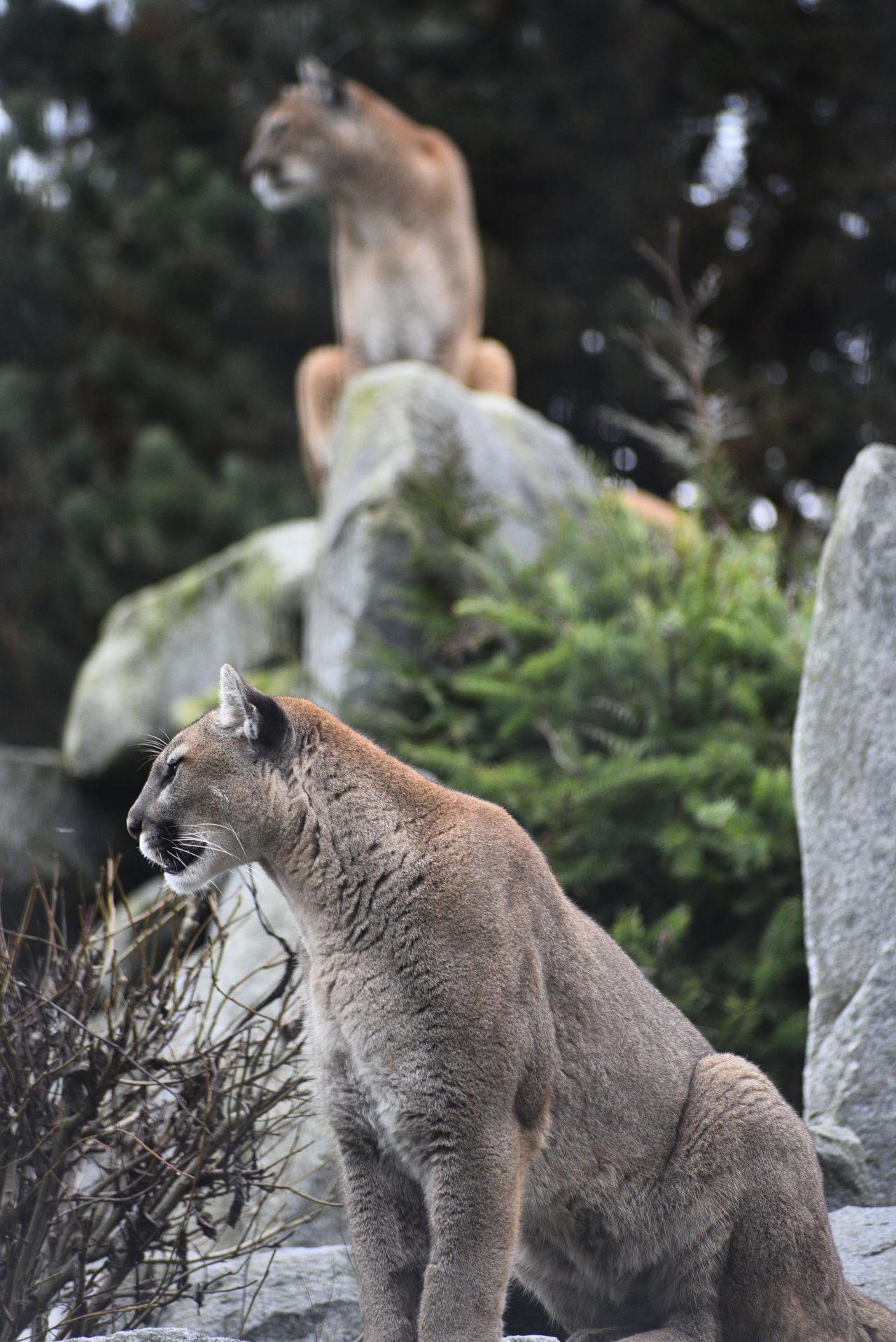
Cougars have over 200 names due to inhabiting the largest geographical region of any other cat in the world. Other names for the cougar include mountain lion, puma, fire cat, screamer, panther, and catamount.
Though their scientific name means “cat of one color”, cougars are born with dark brown spots to help aid in camouflage. At around 6 months old the spots will begin to fade and will start transforming their pelage to their singular color.
Largest of the “purring cats”.
Sources:
IUCN: RED LIST
Carnivores of the World: SECOND EDITION
Washington Department of Fish and Wildlife
U. S. Fish & Wildlife Services

